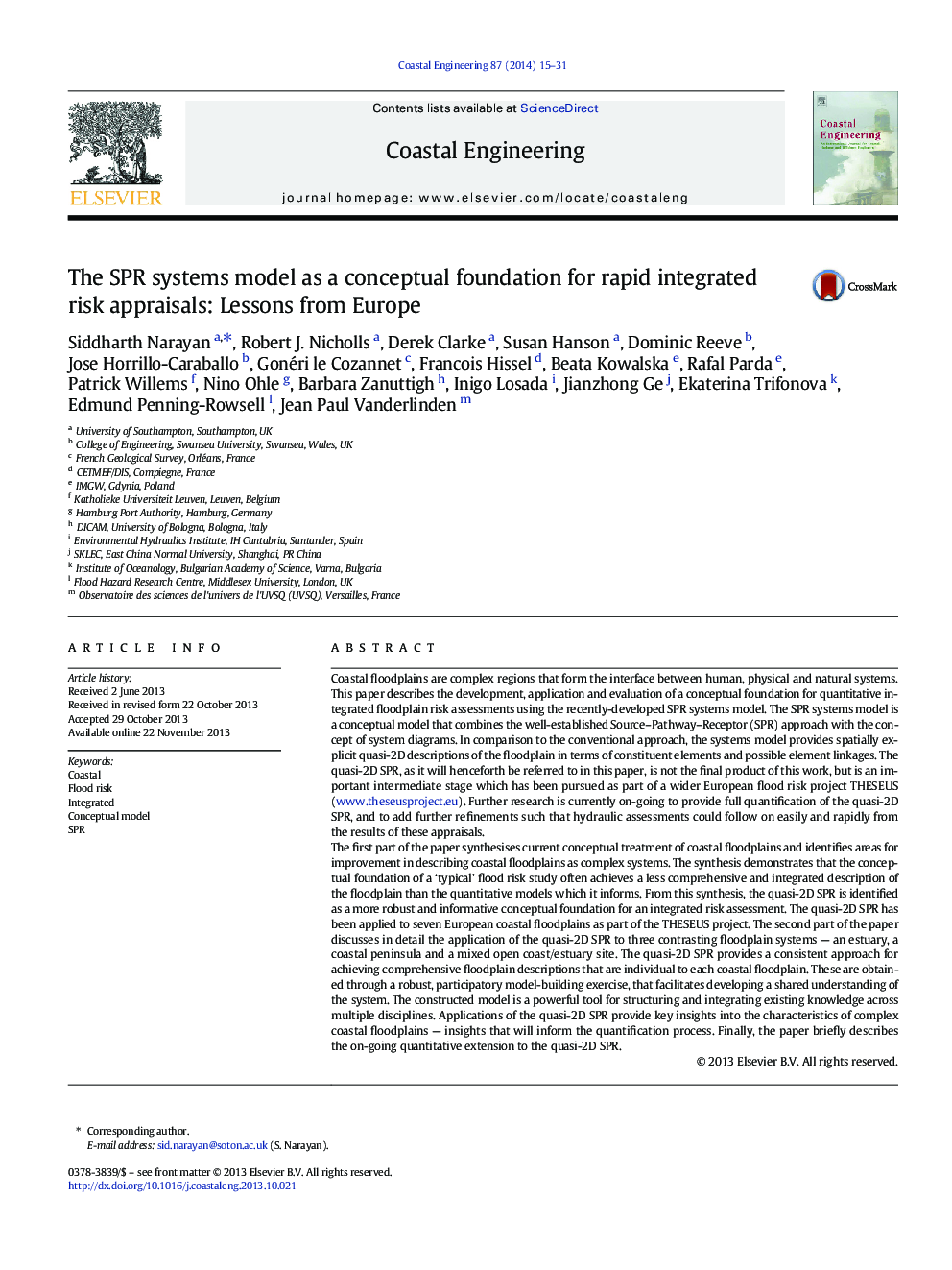| کد مقاله | کد نشریه | سال انتشار | مقاله انگلیسی | نسخه تمام متن |
|---|---|---|---|---|
| 1720821 | 1520367 | 2014 | 17 صفحه PDF | دانلود رایگان |

• Risk appraisal models for coastal floodplains require a robust conceptual model.
• Synthesis of current practice demonstrates need for integrative model.
• The new SPR systems model is applied and evaluated for EU coastal sites.
• The model achieves comprehensive floodplain descriptions.
• The participatory approach and model are strong foundations for quantitative assessments.
Coastal floodplains are complex regions that form the interface between human, physical and natural systems. This paper describes the development, application and evaluation of a conceptual foundation for quantitative integrated floodplain risk assessments using the recently-developed SPR systems model. The SPR systems model is a conceptual model that combines the well-established Source–Pathway–Receptor (SPR) approach with the concept of system diagrams. In comparison to the conventional approach, the systems model provides spatially explicit quasi-2D descriptions of the floodplain in terms of constituent elements and possible element linkages. The quasi-2D SPR, as it will henceforth be referred to in this paper, is not the final product of this work, but is an important intermediate stage which has been pursued as part of a wider European flood risk project THESEUS (www.theseusproject.eu). Further research is currently on-going to provide full quantification of the quasi-2D SPR, and to add further refinements such that hydraulic assessments could follow on easily and rapidly from the results of these appraisals.The first part of the paper synthesises current conceptual treatment of coastal floodplains and identifies areas for improvement in describing coastal floodplains as complex systems. The synthesis demonstrates that the conceptual foundation of a ‘typical’ flood risk study often achieves a less comprehensive and integrated description of the floodplain than the quantitative models which it informs. From this synthesis, the quasi-2D SPR is identified as a more robust and informative conceptual foundation for an integrated risk assessment. The quasi-2D SPR has been applied to seven European coastal floodplains as part of the THESEUS project. The second part of the paper discusses in detail the application of the quasi-2D SPR to three contrasting floodplain systems — an estuary, a coastal peninsula and a mixed open coast/estuary site. The quasi-2D SPR provides a consistent approach for achieving comprehensive floodplain descriptions that are individual to each coastal floodplain. These are obtained through a robust, participatory model-building exercise, that facilitates developing a shared understanding of the system. The constructed model is a powerful tool for structuring and integrating existing knowledge across multiple disciplines. Applications of the quasi-2D SPR provide key insights into the characteristics of complex coastal floodplains — insights that will inform the quantification process. Finally, the paper briefly describes the on-going quantitative extension to the quasi-2D SPR.
Journal: Coastal Engineering - Volume 87, May 2014, Pages 15–31